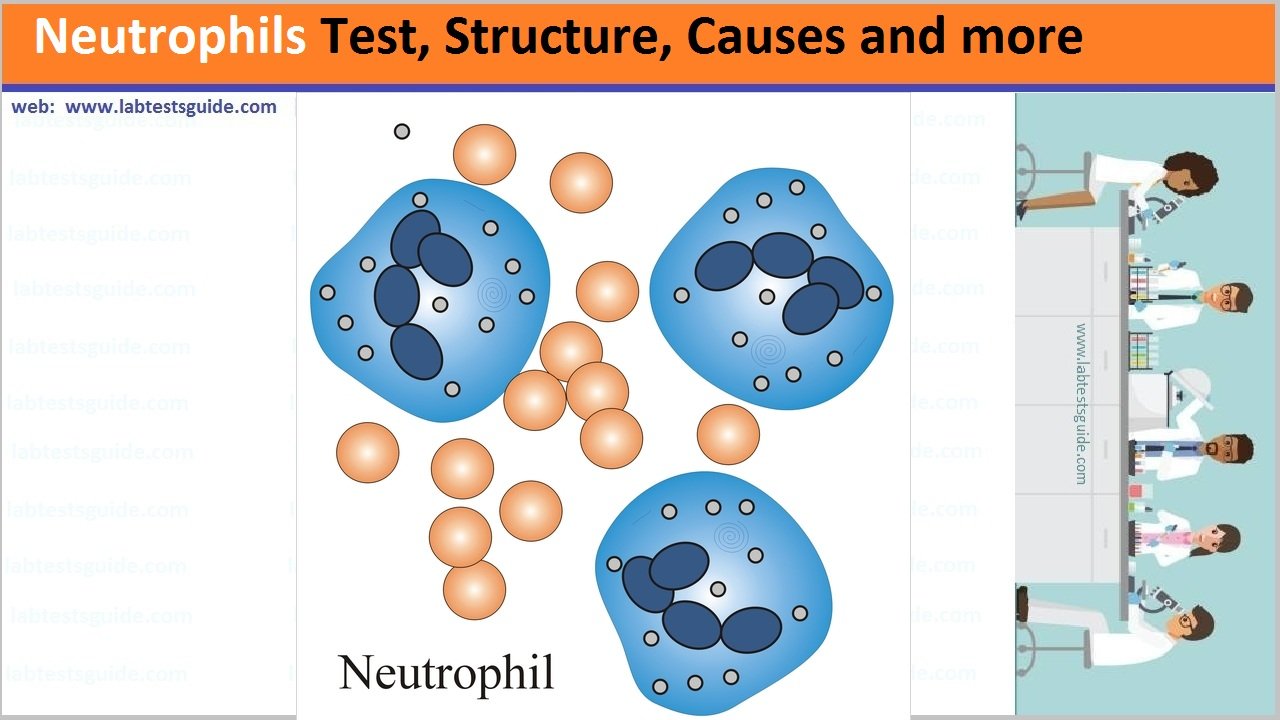Neutrophils are a type of white blood cell that helps heal damaged tissues and resolve infections. Neutrophil blood levels increase naturally in response to infections, injuries, and other types of stress. They may decrease in response to severe or chronic infections, drug treatments, and genetic conditions.

Also Known as: Neutrophils, Neutrocytes, Polycytes, Poly, Neutro, Polymorph
Cells Panel: Neutrophils, Lymphocytes, Monocytes, Eosinophils, Basophils
Referance Ranges:
| Test Name | Male | Female |
| Neutrophils (Poly) | 40 – 75 % | 30-75 g/dl |
Neutrophils increased in:
- Infections.
- Myocardial infarction.
- Stress.
- metabolic diseases.
- Inflammations.
Neutrophil Decreased in:
- In radiation therapy or chemotherapy.
- Infections.
- hypersplenism.
- Folic acid or B12 deficiency.
- Hepatic diseases.
- Drugs
- collagen vascular diseases.
Structure of Neutrophils:
- They are 10–12 µm in diameter
- Neuclus: 2-5 Lobs, ClumpedChromatin
- Cytoplasm: Pink/white Granules
- significantly larger than erythrocytes
- They are called neutrophils because their granules show up most clearly with stains that are chemically neutral
- The nucleus has a distinct lobed appearance and may have two to five lobes
- Older neutrophils have increasing numbers of lobes and are often referred to as polymorphonuclear (a nucleus with many forms), or simply “polys.”
- Younger and immature neutrophils begin to develop lobes and are known as “bands.”
Functions:
Neutrophils are born in the bone marrow. They circulate in the blood for 6-10 hours, and then enter the tissues. They are motile, and phagocytic and will destroy damaged tissue and bacteria. They self destruct after one burst of activity.
Related Articles:
Possible References Used




